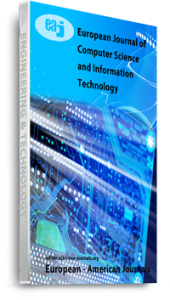The integration of Artificial Intelligence (AI) algorithms into safety-critical applications has become increasingly prevalent across various domains, including autonomous vehicles, medical diagnosis, industrial automation, and aerospace systems. These applications rely heavily on AI to make decisions that directly affect human safety, economic stability, and operational efficiency. Given the critical nature of these tasks, it is essential to rigorously assess the reliability of AI algorithms to ensure they perform consistently and accurately under all conditions. Reliability, in this context, refers to the AI system’s ability to function without failure over a specific period, under defined operational conditions. In safety-critical domains, even minor errors or inconsistencies in AI decision-making can lead to catastrophic outcomes, such as traffic accidents involving autonomous vehicles, incorrect medical diagnoses leading to improper treatments, or failures in industrial processes that may cause costly downtime or even human casualties. The increasing complexity and deployment of AI technologies in these domains highlight the urgent need for a comprehensive understanding and evaluation of AI reliability. This paper provides a detailed analysis of the design considerations and methodologies for enhancing the reliability of AI algorithms. The discussion begins by exploring the underlying principles of reliability in AI systems, focusing on both theoretical and practical perspectives. We examine key factors that influence reliability, including data quality, algorithmic robustness, model interpretability, and system integration. The paper then delves into various reliability assessment techniques, such as fault tolerance mechanisms, error detection and correction methods, redundancy, and validation processes. To provide a deeper understanding of reliability in AI, we introduce mathematical models and statistical evaluation techniques that quantify reliability metrics. For instance, reliability modeling using exponential distribution, Monte Carlo simulations for probabilistic reliability analysis, and error propagation studies using Jacobian matrices are presented. We also explore the use of machine learning-specific reliability metrics, such as the Area Under the Curve (AUC) in Receiver Operating Characteristic (ROC) analysis, which helps evaluate the performance of AI in critical decision-making contexts. Furthermore, this paper addresses the current challenges and limitations in ensuring AI reliability, including computational complexity, ethical considerations, and regulatory compliance issues. We highlight the difficulties in developing AI models that can maintain their reliability across diverse and unpredictable real-world scenarios. The potential for bias, lack of transparency in AI decision-making, and difficulties in explaining complex AI models also present significant hurdles that need to be addressed to enhance reliability. The findings and methodologies discussed in this paper aim to contribute to a deeper understanding of the complex landscape of AI reliability, providing a framework for researchers, practitioners, and policymakers to develop safer, more reliable AI systems that can be trusted to operate in environments where safety is paramount.
Keywords: AI algorithms, Applications, Reliability, Safety

